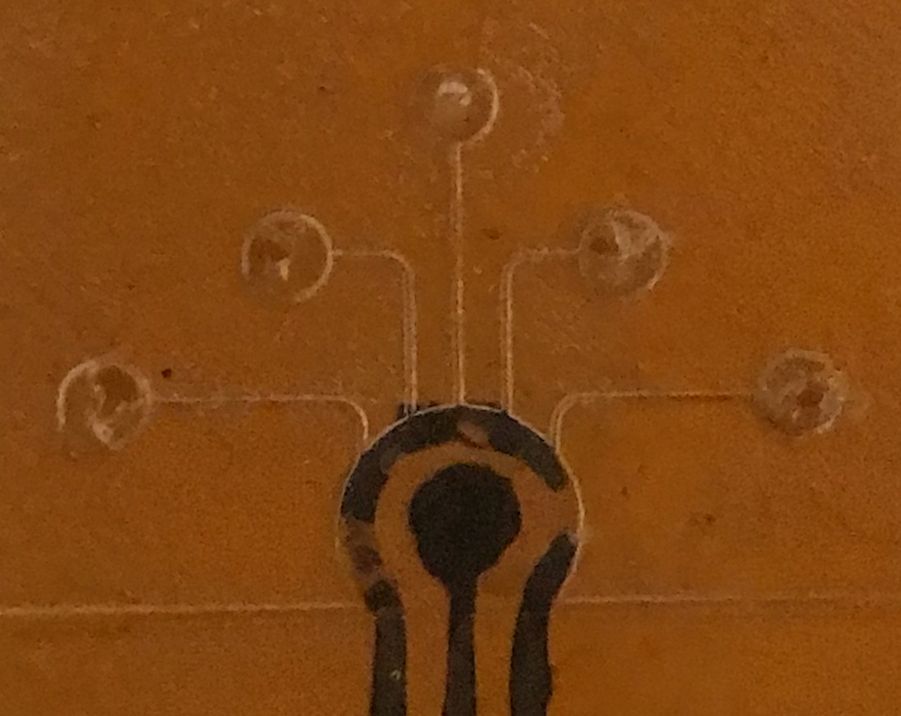Micro- Nano- Bio- Systems (MNBS)
In this activity various sensing devices and microsystems intended to be applied in the Micro- Nano- Bio- Systems (MNBS) field are developed. The intent is to go beyond the single sensing device and also consider their extension into sensing arrays and their integration into practical microfluidic or other types of microsystems as appropriate by the application.
Lab-on-Chip and Point-of-Care Systems
Herein, biosensors for the detection of various health conditions are developed. Work is focused towards optimizing sensitivity and selectivity of the sensors while keeping in mind their integration in microfluidic networks which enable their use in practical systems. To date, various types of sensors have been developed which despite their good sensitivity do not lend themselves to easy integration on Lab-on-Chip systems. On the other hand, developments in the field of nanotechnology have led to an explosion of highly capable biosensors. In this domain, work is focused on reduced graphene oxide (rGO) biosensors, due to the advantages they offer in terms of sensitivity, functionalization and ease of integration on LOC systems. On the microfluidic end, the necessary microchannels and chambers are implemented on a Printed Circuit Board (PCB) platform. Using this approach, the electrical and the electronic components are on the same substrate with the microfluidic network and the detection device, improving in this way the scale of integration and homogeneity and reducing the requirements for peripheral components. In addition, it is a cost-effective and commercially available technology and the PCB substrates are compatible with the polymers commonly used for making microfluidic channels, i.e. PDMS or polyimide. Also within this activity a Point-of-Care (PoC) instrument is being developed. The instrument will provide all the microfluidic and electrical connections necessary to operate the LoC effectively. It is built around a computational core able to control the electronics and electromechanical systems of the device while it will also provide a friendly user interface and connect the instrument to remote databases via the web.
I. Reduced Graphene oxide biosensors
A key technology in this activity are reduced graphene oxide (rGO) biosensors. These sensors rely on the reduction of graphene oxide after a relatively low temperature (180 °C) treatment which restores its sp2 lattice, but leaves several functional groups on its surface, thus allowing for the immobilization of probe biomolecules. This approach allows for the easy implementation of biosensors on a wide variety of substrates and their integration with microfluidic platforms.
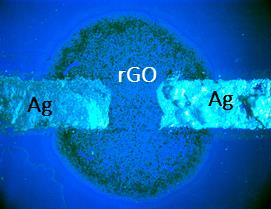
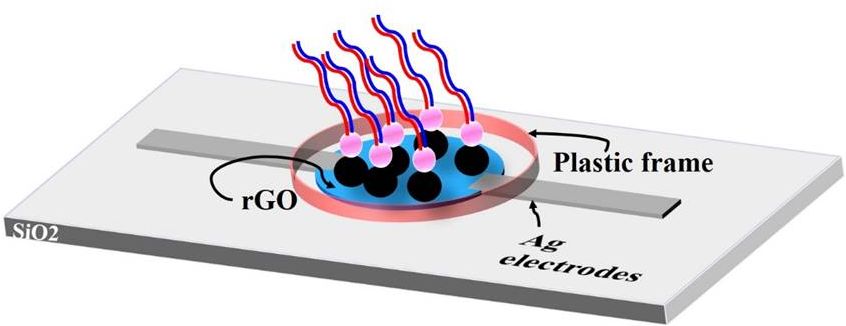
ΙΙ. Lab-on-Chip
A Lab-on-Chip (LoC) has been developed which includes a DNA amplification unit and a detection unit based on reduced graphene oxide biosensors. The chip is implemented on a Printed Circuit Board (PCB) thus taking advantage of the mass production amenable methods employed in the PCB industry. The microfluidic network of the chip (microchannels and microchambers) is implemented within a polyimide layer on the PCB while the biosensors are fabricated by simply depositing the rGO between pre-patterned electrodes. In the current design up to 4 metal layers are taken advantage of in order to implement the heating elements for the amplification and hybridization chambers and the electronic contacting pads for the biosensors. Extra considerations include dedicated fluidic inputs for inserting the sample and buffer solutions.
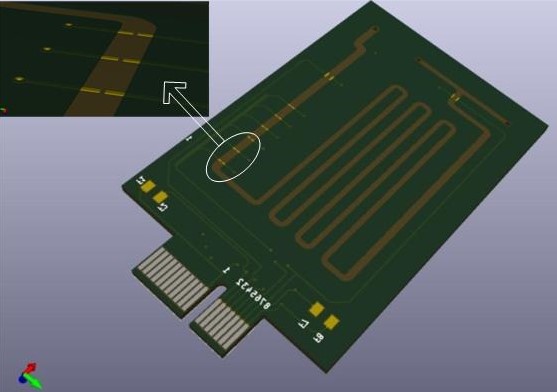
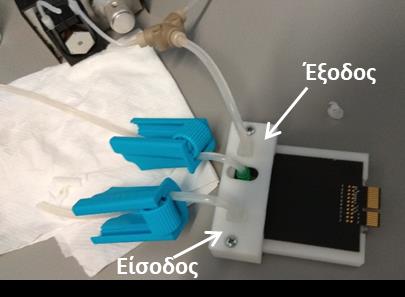
ΙΙI. Point-of-care
A PoC instrument able to host the PCB LoC is being developed. The instrument provides all the microfluidic and electrical connections necessary to operate the LoC effectively. It furnishes a miniature peristaltic pump and two pinch valves to control the flow of the sample under test and the reagents necessary to perform on chip amplification and electronic detection of the biotinylated amplicons on the rGO biosensors implemented on the chip. The electronics of the instrument comprise a computation core implemented on a raspberry Pi, a temperature controller to regulate the temperature zones of the LoC and the sensor readout circuitry.
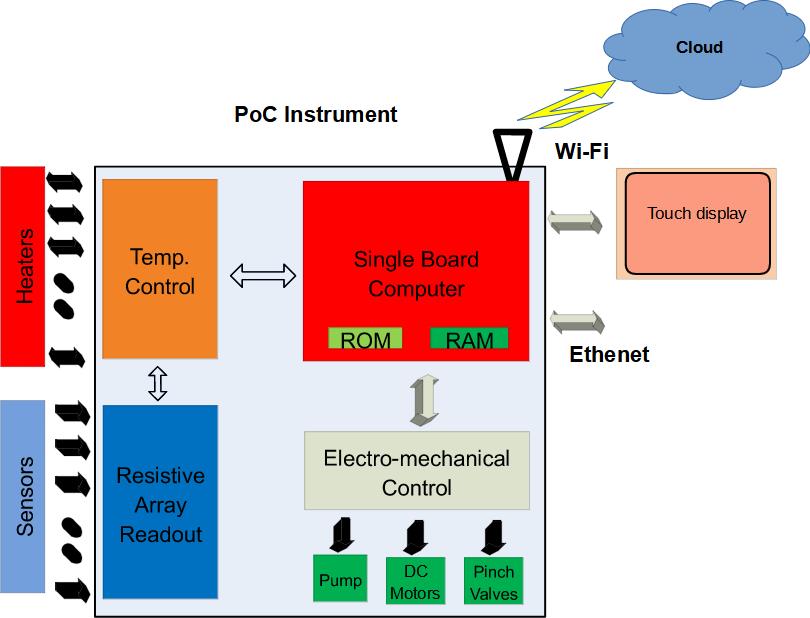
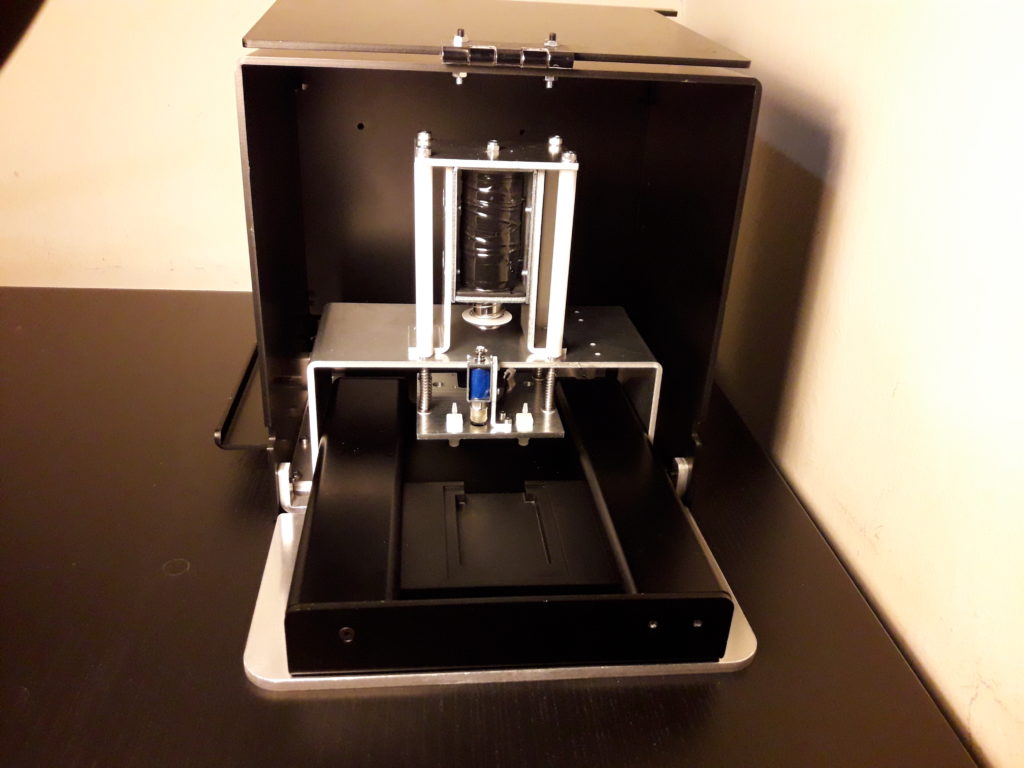
Epidermal Sensors
I. Microsystems for obstructive sleep apnea treatment
Obstructive Sleep Apnea (OSA) is a common undiagnosed disorder that strongly affects health and quality of life when left untreated. In this activity, an automated non-invasive system for the real time monitoring and treatment via electro-stimulation (ES) of the genioglossus muscle of obstructive sleep apnea (OSA) – a common underdiagnosed disorder - is being developed. The close-loop system includes a sensor to monitor breath effort from respiratory movement, a Transcutaneous Electrical Nerve Stimulation (TENS) device, and a program that analyzes the signal of the sensor and controls the whole system. The breath effort signal is first processed and then fed to a machine learning (ML) algorithm. When an apnea event starts, the TENS device stimulates the genioglossus muscle in order to reopen the upper-airway. The system is designed to work using epidermal resistive strain sensor patches, implemented on a polydimethylsiloxane (PDMS) substrate and graphene nanoplatelets (GNPs), instead of the commonly used belts for improved stability and comfort.
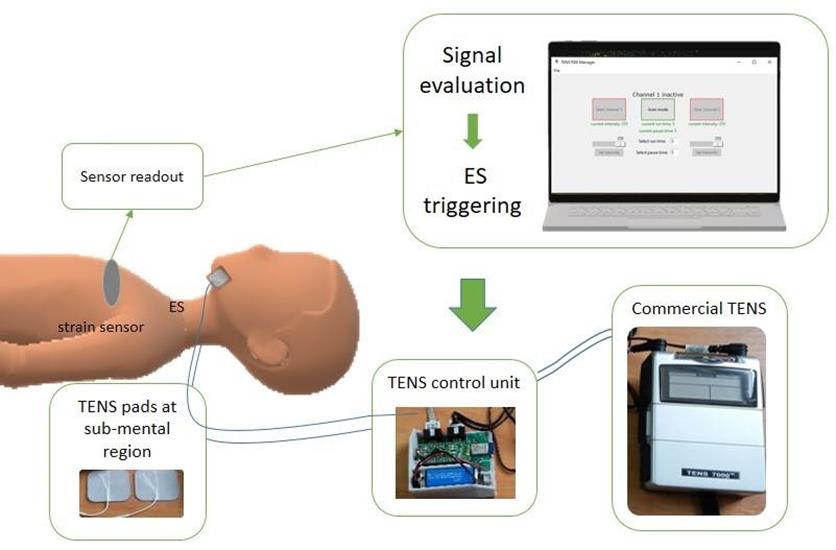
II. Epidermal patch for glucose monitoring sensor in sweat
This work focuses on the development of an epidermal patch comprising a sweat collector microfluidic and a solution based electrochemical sensor for the detection of analytes in this biofluid. The sensor is realized on a flexible polyimide film using a carbon based ink which is subsequently bonded with the PDMS microfluidic to form the final patch. Glucose is selected as the analyte of interest. Detection of glucose in sweat removes the painful invasive blood sampling step, while paving the road for the continuous monitoring of glucose levels.
